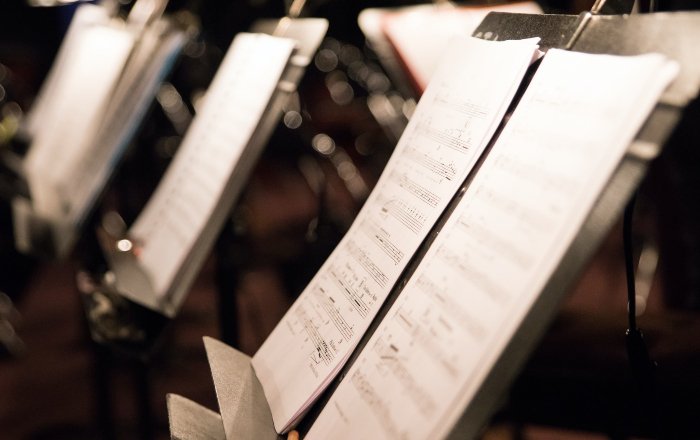The flute is one of the oldest instruments known to mankind. From the earliest people to modern times, the flute has graced many ears with its soft and usually high-pitched tone. From classical orchestral works to jazz and more, the flute has lent its distinct timbre to many sounds. As a budding flutist, you’re learning techniques to play the instrument correctly and confidently. Musicnotes is your go-to for easy flute sheet music, enhancing your love of the flute and music education.
How Does a Flute Toot?
When the word “flute” is used, it is usually in reference to the Western concert flute. Although most flutes are made of silver or silver-plated brass, they are part of the woodwind family, which includes oboes, clarinets, saxophones, and bassoons. Flutes also differ from other common woodwinds primarily in three ways:
- Sound creation: Whereas other woodwinds require a single or double-reed, playing the flute means blowing air over an opening called an embouchure hole.
- Horn carriage: Flutes are typically held to the side, perpendicular to the body of the person playing.
- Shape: Most woodwinds have a flared bell end. Flutes are completely cylindrical with a closed end.
Similar to other woodwind instruments, pitches on the flute are generated by a series of open and closed holes along the instrument.
In most ensembles, flutes are among the highest-pitched instruments. The common flute is pitched in C and has a range extending from middle C to the third C above middle C. Some flutes include a special key to hit the B below middle C. Advanced flutists can play above this third C.
As with other instruments, flutes come in different sizes and shapes that correspond to their range. The piccolo looks like a miniature flute and plays one octave higher. Lower flutes such as the alto and bass flute are lower in pitch and are curved.
Do You Need To Transpose Flute Sheet Music?
The Western concert flute is a non-transposing instrument. It is pitched in C, which means the notes in flute sheet music match the pitches produced. Unlike the B-flat clarinet or most saxophones, flute players don’t need to transpose when reading scores or charts for C-instruments. Music written for pianos, guitars, and voices is pitched in C, so a flutist can play what is written. Musicnotes offers sheet music designated for C-instruments, as well as piano, guitar, and lead sheets, all of which a flute player can read without transposing.
What Kind of Music Does a Flute Play?
Flutes can be found in almost any genre of music. Most orchestral music features parts for the flute. You can hear the flute in classic and contemporary jazz music. The rock band Jethro Tull features this instrument, and pop superstar Lizzo plays the flute in many of her songs. You can hear the smooth sounds of the flute in film scores, commercial jingles, and more.
Musicnotes offers flute sheet music from every genre. Whether you’re new to the instrument or you’ve been playing it for years, you can find theme songs, classical works, and more written for the flute. Find solo pieces or sheet music that includes piano accompaniment or guitar tabs. Playing music, solo or with others, is better when you have access to the songs you love.
Photo by Antoine J. on Unsplash
Readers May Also Like:

8 Creative Ways To Style Your Human Hair Wig & Lace Front Wig For A Fab Look

Making the Right Choice: Everything You Need to Know Before Buying Furniture Online

Moissanite Rings – Perfect Choice for the Modern-Day Bride

35 Rihanna Songs That Will Always Remain Timeless

